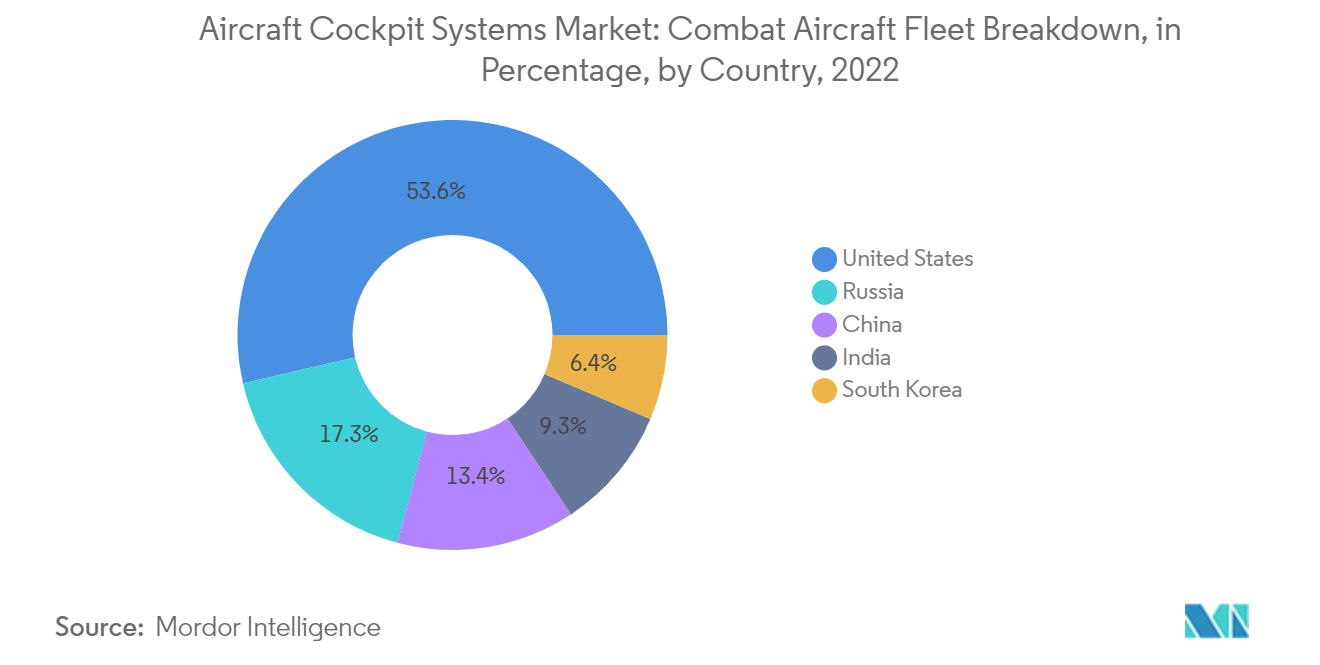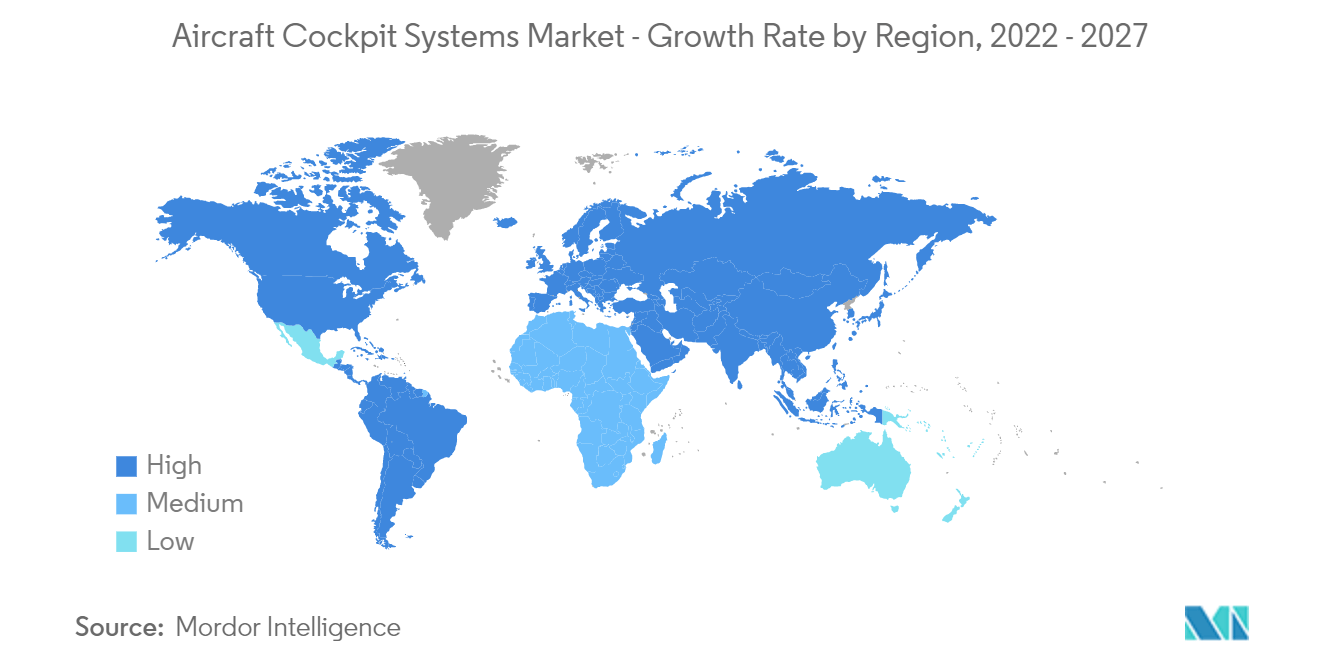Market Trends of Aircraft Cockpit Systems Industry
Military Aircraft Segment to Dominate Market Share During the Forecast Period
The adoption of multi-functional displays has been increasing in military aircraft, as they offer several advantages to pilots. Modern military aircraft cockpits feature all-glass, large-format multi-functional displays for improving video and imaging options so that the pilots can view multiple video sources ranging from external display processors and video sensors, including FLIR, radar, weapons, and cameras, based on their requirements.
Newer-generation military aircraft are incorporating various types of multi-functional displays to enhance pilot situational awareness. For instance, in July 2021, Russia officially unveiled its new Checkmate fighter, which is expected to take its first flight in 2023, with series production to begin in 2026. The cockpit features one large and several smaller color multi-function displays along with a standard heads-up display. Also, India's upcoming 5th generation fighter aircraft Advanced Medium Combat Aircraft (AMCA), will feature a multi-function display (MFD) placed in portrait orientation.
On the other hand, many military aircraft avionics modernization and upgrade projects are being taken up around the world presently, which is expected to drive the adoption of newer generation multi-functional displays. Additionally, India is in plans to upgrade 200 Sukhoi 30 MKI combat aircraft that have been in service for over 20 years. The Super Sukhoi standard upgrade to Indian aircraft will include locally manufactured radars, a full-glass cockpit, and flight-control computers. Thus, the growing adoption of multi-functional displays in military cockpits is expected to drive the market during the forecast period.

Asia-Pacific is Expected to Dominate the Market During the Forecast Period
Asia-Pacific has become a significant hub for the aviation industry over the years. The emerging economies in the region, like India and China, are experiencing a massive surge in their respective civil aviation markets due to an increased demand for air travel. Hence, the revenues from Asia-Pacific are projected to witness a high growth rate during the forecast period. The Boeing Company delivered 91 aircraft in the Asia-Pacific region last year, while 30% of the deliveries of Airbus were in Asia-Pacific in the same year.
China is leading the recovery of global commercial aviation due to great domestic demand, helping the airlines witness financial recovery. It has become a major hub for the aviation industry over the years due to high demand from civilian and military customers. Commercial aviation has been a key contributor to China's aviation industry over the years.
On the other hand, the Indian carrier, IndiGo, took delivery of a record 36 Airbus planes between January and November 2021. Overall, IndiGo has ordered 730 A320-A321 families of aircraft so far. India is also a critical military aircraft market, as the country has been modernizing its aerial capabilities by procuring new aircraft and indigenously developing military aircraft.
Similarly, other countries like Japan, South Korea, Australia, and Southeast Asian countries are also experiencing a growth in the aviation sector demand, thereby bolstering the region's market prospects.


